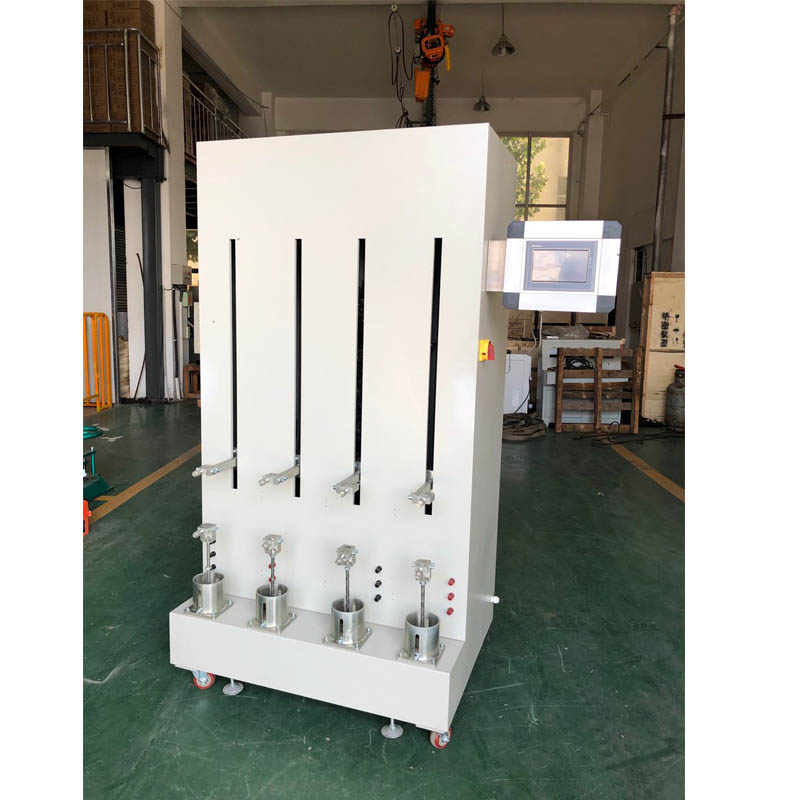Winding and Torsion Testing Equipment for Enhanced Material Performance Evaluation
Understanding the Winding and Torsion Testing Machine
In today's advanced manufacturing landscape, the integrity of materials and components is crucial for the production of reliable and safe products. One of the essential pieces of equipment used to evaluate these properties is the winding and torsion testing machine. This specialized apparatus is designed to test the performance and durability of various materials, particularly those used in applications that involve significant twisting and winding stresses.
What is a Winding and Torsion Testing Machine?
A winding and torsion testing machine is a device that applies controlled amounts of torque and winding forces to materials or components to measure their mechanical properties. This testing is essential in industries such as aerospace, automotive, and manufacturing, where materials are subjected to complex loading conditions during their service life.
The machine typically consists of a frame that holds the specimen, a torque generator, and various sensors to measure force and deformation. The setup allows for precise control over the load and speed, enabling the evaluation of both the material's strength and ductility under torsional and winding conditions.
Applications of the Machine
The primary application of winding and torsion testing machines is in the assessment of materials used in the production of wires, cables, and composite materials. For example, electrical cables must endure significant winding and twisting during installation without losing their conductive properties. By using a winding and torsion testing machine, manufacturers can simulate these conditions and determine whether a particular cable design can withstand the stresses it will encounter in real-world applications.
Another vital application is in the automotive industry, where components such as suspension systems and drive shafts are subjected to torsional loads. Testing these components ensures that they can perform reliably under various driving conditions, ultimately contributing to the vehicle's safety and performance.
winding and torsion testing machine

Testing Procedures
The testing procedure generally involves preparing the specimen according to specific dimensions and material properties. Once the specimen is secured in the machine, the operator can begin the test by applying torque in a controlled manner. The machine continuously monitors the specimen's response, measuring parameters such as torque levels, deformation, and the material's failure point.
Data collected during the test is vital for determining mechanical properties such as fatigue strength, torsional modulus, and the maximum torque at failure. Analyzing this data allows engineers to make informed decisions regarding material selection, design modifications, and quality control processes.
Importance of Testing
Winding and torsion testing is not merely a regulatory requirement; it plays a critical role in ensuring the safety, reliability, and longevity of components. By identifying potential weaknesses in materials or designs early in the production process, manufacturers can mitigate risks and reduce the likelihood of product failures. This proactive approach not only enhances safety but also leads to cost savings by minimizing the need for costly recalls or repairs.
Conclusion
In conclusion, the winding and torsion testing machine is an indispensable tool in modern engineering and manufacturing. Its ability to simulate real-world stresses on materials and components empowers engineers to conduct thorough evaluations of product performance and durability. As industries continue to push the boundaries of material science and engineering, the importance of such testing equipment will only grow. The winding and torsion testing machine stands at the forefront of this effort, ensuring that the products we rely on every day are built to last and perform safely under stress.
-
The Role of Tensile Force Testers in Quality Control and Material Science
NewsAug.01,2025
-
Maintenance and Safety Tips for Aging Ovens
NewsAug.01,2025
-
Density Balance in Forensic Science
NewsAug.01,2025
-
Advanced Optical Measurement Technologies
NewsAug.01,2025
-
A Buyer’s Guide to Tensile Test Machines
NewsAug.01,2025
-
Why the Conductor Resistance Constant Temperature Measurement Machine Redefines Precision
NewsJun.20,2025
 Copyright © 2025 Hebei Fangyuan Instrument & Equipment Co.,Ltd. All Rights Reserved. Sitemap | Privacy Policy
Copyright © 2025 Hebei Fangyuan Instrument & Equipment Co.,Ltd. All Rights Reserved. Sitemap | Privacy Policy

